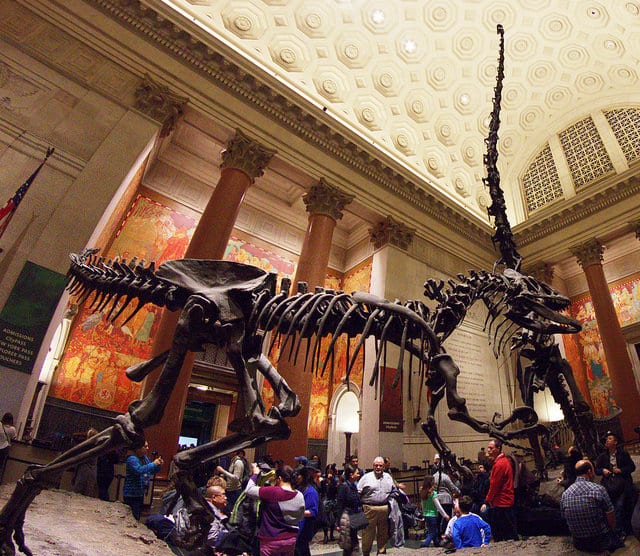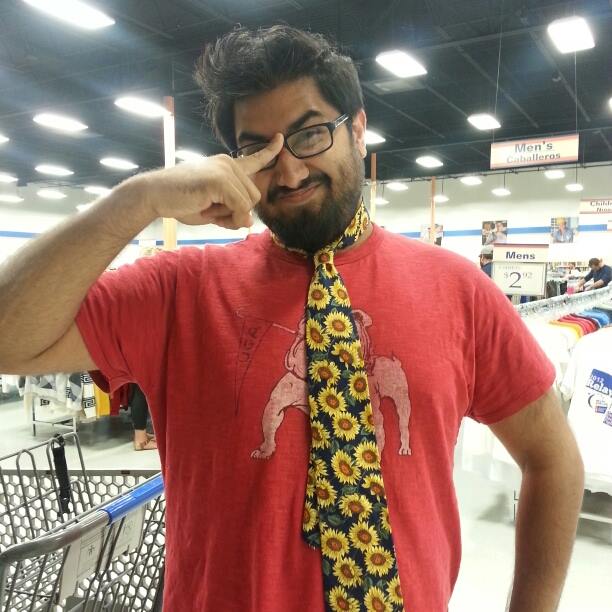By: Rishi R. Masalia, Athens Science Café
On June 12th “Jurassic Worldâ€, the 4th installment of the Jurassic Park series, is set to hit theaters. Now, I love dinosaurs and I know I'm not alone. Our fascination with them has permeated across pop culture, generating movies, songs, chicken nugget shapes, and even a list of official U.S. state dinosaurs. Additionally, it has fueled real scientific interest in paleontology, paleobotany, and archeology, providing even more dino tidbits. In the 22 years since the original “Jurassic Park†movie we've learned a lot about dinosaurs, most notably, confirmation that modern birds are descendants of dinosaurs. This is clearly evident in the famous Archaeopteryx fossil, which was a genus of bird-like dinosaur that is transitional between non-avian dinosaurs and modern birds. Further cementing this is the discovery that over 30 species of dinosaur had feathers rather than scales, though the idea is still contested. However, knowledge about dinosaurs no matter how notable, isn't quite the same as a Dino theme park. Now regardless of your opinion on if we should recreate a Tyrannosaurus Rex, my interests align with, if we could.

BINGO, Dino DNA:
For those who haven't seen “Jurassic Park,†the idea presented in the movie was “simple”. You go out find an ancient mosquito trapped in tree sap, extract out Dino DNA from the insect's last meal, clone it, inject it into some kind of egg, and BINGO – baby dinosaur. So let's break this down. The starting point of any dinosaur resurrection exercise is DNA. Unfortunately, DNA doesn't last long and will completely degrade after 6.8 million years, even under ideal conditions (cold, dark, isolated). This may seem like quite a bit of time, but according to carbon dating the most recent non-avian dinosaur fossils existed 80-85 million years ago. But for fun, let's say that the fossilized tree sap and insect within were exempt from this and contained tractable DNA. Drilling through it as demonstrated in the movie is an exercise in contamination, providing mostly mosquito and tree DNA, not dinosaur.
Puzzle-saurus Rex:
But let's stretch this out further and say you were able to extra viable DNA, can we get a T-rex? Not yet. When DNA is extracted in this manner it'll come out fragmented, much like a billion-piece puzzle set, and in need of assembly. This isn't new, as scientists have assembled the extinct genomes (complete DNA) of mammoths and Neanderthals using close relatives (elephants and humans) as assembly blueprints, much like having an intricate puzzle box. Unfortunately, though dinosaurs are related to modern birds, too much evolutionary time has gone by making this assembly process extensively tricky. In other words evolutionary changes in modern birds are large enough that not every piece of dinosaur DNA can be matched to a corresponding portion of modern bird DNA.
Finally, recreating an extinct genome is useless if you can't create a way to transfer it into a viable embryo. Even John Hammond would agree that viewing DNA on a screen makes a fairly weak attraction for a theme park. Understandably, Crichton (author of the original book) and Spielberg gloss over this part, simply showing a dinosaur hatching from an egg. Genetic engineers are still unsure how to successfully clone birds. The process is complicated and explained in detail here; but in a nutshell cloning requires replacing DNA of one individual (or species) with another at the early in embryo development. Unlike an embryo on a uterus which is fixed on the uterine wall early in development, bird embryos are in constant motion until the eggshell is formed much later in development. Once the eggshell exits the female's body, it's difficult to swap out the DNA without compromising the organism.
Chickensaurus:
So making a dinosaur from Dino DNA as described by Crichton and Spielberg is not really feasible, even with advancements in genetic engineering. But don't worry paleo nerds, all isn't lost. In a TED talk, paleontologist Jack Horner describes a project he and colleagues are currently working on, to reverse engineer a dinosaur from a chicken. Yes—a chicken. It capitalizes on dinosaur atavisms (ancestral characteristics), whose genes lie dormant in the genomes of modern chickens. Atavisms, though not common, are not unheard of—there are documented cases of people born with tails and snakes with legs. Some characteristics Horner is focusing on are activating the formation of chicken teeth and repressing tail reabsorption. The goal here is to restore many ancestral characteristics to create a sort of proto-dinosaur. Obviously, Chickenosaurus is still a work in progress, but the science and interest are there.
Our favorite dinosaurs may never come back to life in the literal sense, and I'm not terribly upset about that. For me, Jurassic Park can live on in through excavated fossils and museum exhibits.
 Rishi R. Masalia is a PhD candidate in the Department of Plant Biology at the University of Georgia studying the genetics of drought resistance in sunflower. He is a biologist, bioinformatician, artist, comedy gold mine, smooth dance machine and all around nerd. Rishi is a founding member of the Athens Science Cafe, and the current President of the student organization: Science Café, UGA Chapter. He can be reached at masalia@uga.edu, or followed on Twitter @RishiMasalia. Rishi R. Masalia is a PhD candidate in the Department of Plant Biology at the University of Georgia studying the genetics of drought resistance in sunflower. He is a biologist, bioinformatician, artist, comedy gold mine, smooth dance machine and all around nerd. Rishi is a founding member of the Athens Science Cafe, and the current President of the student organization: Science Café, UGA Chapter. He can be reached at masalia@uga.edu, or followed on Twitter @RishiMasalia. |
References:
Pascal Godefroit et al., “A Jurassic ornithischian dinosaur from Siberia with both feathers and scales.†Science. (2014). 345 (6195), 451-455. http://www.sciencemag.org/content/345/6195/451
Morten E. Allentoft et al., “The half-life of DNA in bone: measuring decay kinetics in 158 dated fossils.†Proc. R. Soc. B (2012). http://rspb.royalsocietypublishing.org/content/early/2012/10/05/rspb.2012.1745
Novak, B. (2013) Why are Birds a Cloning Challenge? The Long Now Foundation.
“Mr. DNAâ€, Jurassic Park (1993): Cloning Video.
Scientific American, Rise of the Tyrannosaurs by Stephen Brusatte; Illustration by Todd Marshall
About the Author
- athenssciencecafehttps://athensscienceobserver.com/author/athenssciencecafe/April 17, 2020
- athenssciencecafehttps://athensscienceobserver.com/author/athenssciencecafe/April 12, 2020
- athenssciencecafehttps://athensscienceobserver.com/author/athenssciencecafe/April 3, 2020
- athenssciencecafehttps://athensscienceobserver.com/author/athenssciencecafe/March 30, 2020







